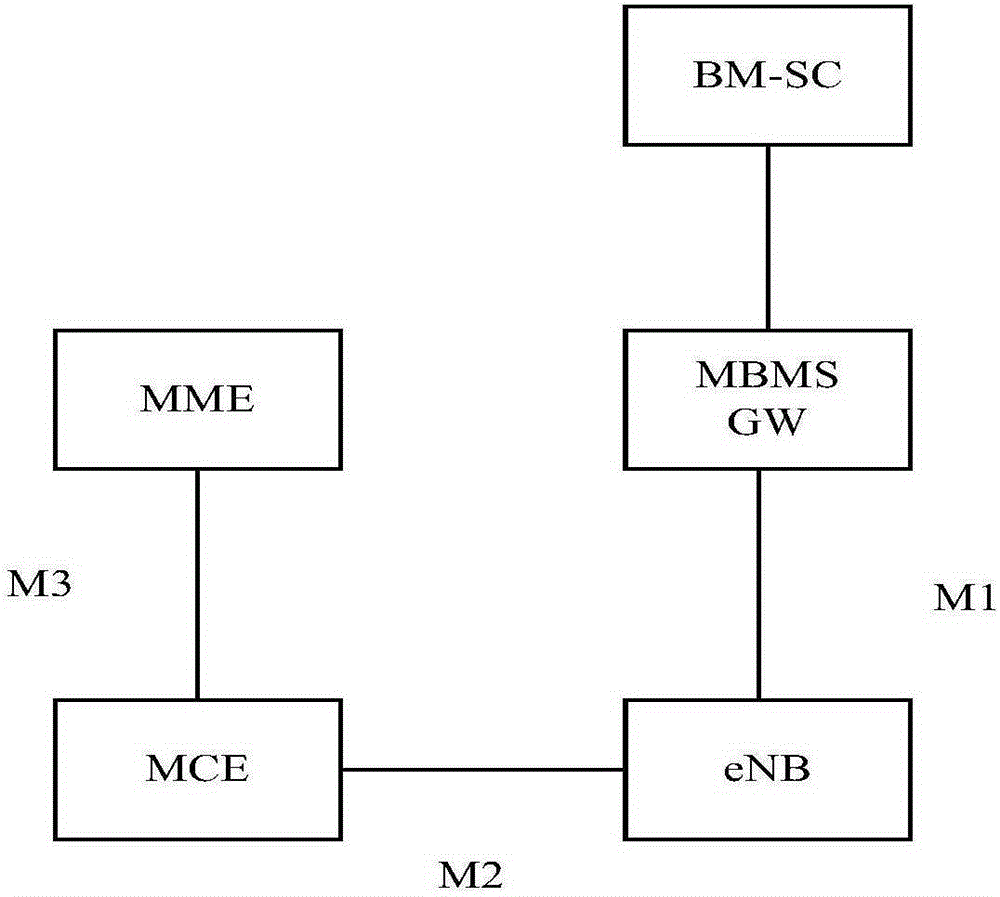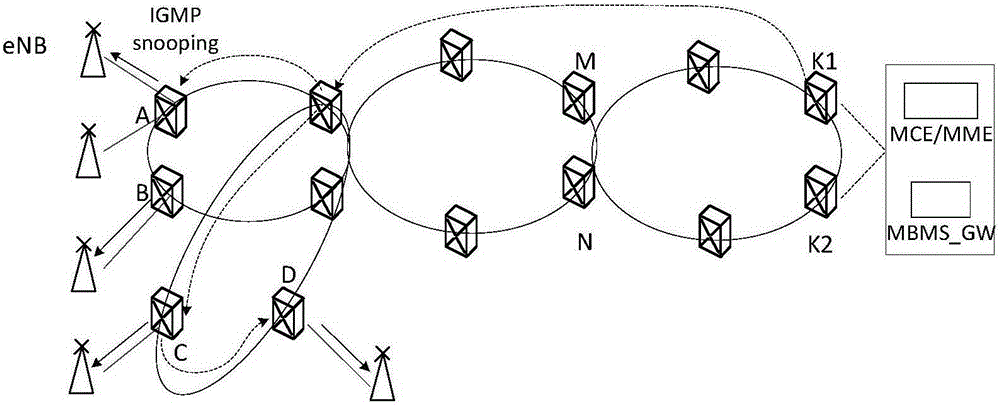Multicast method and device of service messages
A service message and multicast technology, applied in the field of communication, can solve the problems of limited network protection capability, complex implementation technology, complex protocol, etc., and achieve the effect of rapid fault detection and protection switching.
- Summary
- Abstract
- Description
- Claims
- Application Information
AI Technical Summary
Problems solved by technology
Method used
Image
Examples
Embodiment 1
[0092] Embodiment 1. Link failure on the access side
[0093] Such as Figure 10 As shown, for example: if the link between PTN5 and PTN7 fails, the next-level node of the link between PTN5 and PTN7 will reselect the path for receiving multicast services, specifically: Figure 11As shown, PTN7 completes APS selection and selects to receive multicast services from the protection path. PTN8 receives the fault indication of the working path, completes the selection of APS, and receives the multicast service from the protection path. After switching, the multicast service flow is: PTN1->PTN3->PTN5->PTN6->PTN8->PTN7; of course, when the fault recovers, each node waits for the APS to wait for the recovery (Wait To Restore, WTR) timer to expire before switching to the original working path (eg Figure 9 working path shown in ) to receive multicast services.
Embodiment 2
[0094] Embodiment 2: Link failure on the aggregation side
[0095] Such as Figure 12 As shown, for example: if the link between PTN5 and PTN3 fails, the next-level node of the link between PTN5 and PTN3 will reselect the path to receive the multicast service, specifically: Figure 13 As shown, the PTN5 completes the APS selection and selects to receive the multicast service from the protection path. PTN6 receives the fault indication of the working path, completes the selection of APS, and receives the multicast traffic from the protection path. After switching, the service flow is: PTN1->PTN3->PTN4->PTN6->PTN5->PTN7->PTN8; of course, when the fault recovers, each node waits for the APS WTR timer to expire before switching to the original working path (such as Figure 9 working path shown in ) to receive multicast services.
Embodiment 3
[0096] Embodiment 3. Core side link failure
[0097] Such as Figure 14 As shown, for example: if the link between PTN3 and PTN1 fails, the next-level node of the link between PTN3 and PTN1 will reselect the path for receiving multicast services. Specifically: Figure 15 As shown, PTN3 completes the APS selection and selects to receive the multicast service from the protection path. PTN4 receives the fault indication of the working path, completes the selection of APS, and receives the multicast traffic from the protection path. After switching, the service flow is: PTN1->PTN2->PTN4->PTN3->PTN5->PTN7->PTN8; of course, when the fault recovers, each node waits for the APS WTR timer to expire before switching to the original working path (such as Figure 9 working path shown in ) to receive multicast services.
PUM
 Login to View More
Login to View More Abstract
Description
Claims
Application Information
 Login to View More
Login to View More - R&D
- Intellectual Property
- Life Sciences
- Materials
- Tech Scout
- Unparalleled Data Quality
- Higher Quality Content
- 60% Fewer Hallucinations
Browse by: Latest US Patents, China's latest patents, Technical Efficacy Thesaurus, Application Domain, Technology Topic, Popular Technical Reports.
© 2025 PatSnap. All rights reserved.Legal|Privacy policy|Modern Slavery Act Transparency Statement|Sitemap|About US| Contact US: help@patsnap.com



